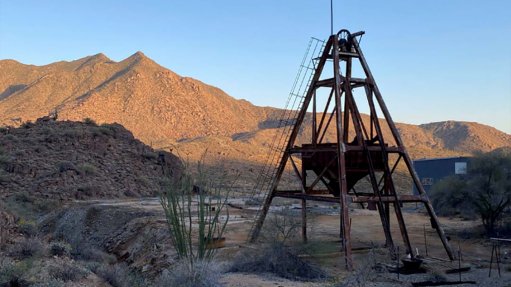A premium should be placed on reputational risks to diamond sector – Debswana security chief


Debswana security head Mpho Kewakae discusses the company's Securing the Diamond Dream strategy
MPHO KEWAKAE Debswana has recently implemented several security technologies to ensure the security of its diamonds at its Jwaneng and Orapa mine sites, in Botswana
Buying diamonds is a highly discretionary procedure and their value depends entirely on people’s perception of their worth, Botswana-based diamond mining company Debswana security head Mpho Kewakae said during his presentation at business-to-business events organiser Fleming Gulf’s 2015 African Mine Security Summit, held in Johannesburg last month.
“If, for example, the US suddenly decides that diamonds are worthless, they effectively become ordinary stones. Therefore, as security personnel, we believe that a premium should be placed on the potential reputational risks that could befall the diamond sector.”
He added that Debswana also placed a significant emphasis on traditional security features, which formed part of Debswana’s Securing the Diamond Dream strategy and included security and governance assurance, security systems and technical solutions, creating a security environment and culture in the company, undertaking investigations and gathering intelligence, and ensuring the company was staffed by people who had high skills levels in terms of security capability.
Kewakae highlighted that the company had recently implemented several security technologies to ensure the security of its diamonds at its Jwaneng and Orapa mine sites, in Botswana.
“We are also nearing the end of a technological upgrade valued at about P350-million for access control and closed-circuit television systems across all our operations,” he added.
Kewakae stressed that this was an area where the company actively sought to ensure it received adequate return on investment.
Scannex Approval Delays
Mining Weekly reported in January that Debswana had planned to soon start the R42.7-million installation of ten upright, full-body Scannex X-ray scanners at four of its diamond mines, in Botswana.
Four scanners were to be installed at security checkpoints at Jwaneng, four at Orapa and one each at the Letlhakane and Damtshaa mines.
Debswana said the systems were to be installed, as the physical and strip-search methods were inefficient, particularly if diamonds were hidden inside the human body, which made it difficult to detect them using traditional methods.
“Strip searches also often impinge on the basic human dignity of workers,” said Kewakae, in response to a Mining Weekly question about the status of the installation of the Scannex systems at the company’s mines.
However, he said the company was still awaiting approval from the Department of Environmental Affairs (DEA) of Botswana to use the machines at its mining sites. It also faced stiff opposition from trade union the Botswana Mine Workers Union (BMWU) regarding the installation of the systems, with the union citing health concerns for mineworkers, should the scanners be installed.
“It has been proven that once one is exposed to such radiation, it can cause cancer, which, as the union, we strongly condemn. We will not allow Debswana to introduce such a deadly device . . . as it has been proven to be a health risk internationally,” said BMWU president Jack Tlhagale in a press statement.
Nonetheless, Kewakae said the Scannex machines had been manufactured by diamond miner De Beers’ research and development wing, DebTech, but would not be delivered to Debswana’s mines until final approval of the system had been granted by the DEA.
About Scannex
The Scannex has a low X-ray radiation dose that allows for quick scanning times. Its operations are fully automated and X-rays are automatically turned off, should any error occur.
Each machine has a built-in dose area product, or DAP, meter that measures the X-ray dose whenever a scan takes place. The Scannex’s dose limit is one millisievert per year (mSv/y) per individual, which is in line with the International Commission on Radiology Protection limit of 1 mSv/y for ordinary members of the public.
Debswana points out that this limit is significantly below the international limit for workers exposed to radiation, such as radiographers and technicians, for whom the limit is 20 mSv/y.
Comments
Press Office
Announcements
What's On
Subscribe to improve your user experience...
Option 1 (equivalent of R125 a month):
Receive a weekly copy of Creamer Media's Engineering News & Mining Weekly magazine
(print copy for those in South Africa and e-magazine for those outside of South Africa)
Receive daily email newsletters
Access to full search results
Access archive of magazine back copies
Access to Projects in Progress
Access to ONE Research Report of your choice in PDF format
Option 2 (equivalent of R375 a month):
All benefits from Option 1
PLUS
Access to Creamer Media's Research Channel Africa for ALL Research Reports, in PDF format, on various industrial and mining sectors
including Electricity; Water; Energy Transition; Hydrogen; Roads, Rail and Ports; Coal; Gold; Platinum; Battery Metals; etc.
Already a subscriber?
Forgotten your password?
Receive weekly copy of Creamer Media's Engineering News & Mining Weekly magazine (print copy for those in South Africa and e-magazine for those outside of South Africa)
➕
Recieve daily email newsletters
➕
Access to full search results
➕
Access archive of magazine back copies
➕
Access to Projects in Progress
➕
Access to ONE Research Report of your choice in PDF format
RESEARCH CHANNEL AFRICA
R4500 (equivalent of R375 a month)
SUBSCRIBEAll benefits from Option 1
➕
Access to Creamer Media's Research Channel Africa for ALL Research Reports on various industrial and mining sectors, in PDF format, including on:
Electricity
➕
Water
➕
Energy Transition
➕
Hydrogen
➕
Roads, Rail and Ports
➕
Coal
➕
Gold
➕
Platinum
➕
Battery Metals
➕
etc.
Receive all benefits from Option 1 or Option 2 delivered to numerous people at your company
➕
Multiple User names and Passwords for simultaneous log-ins
➕
Intranet integration access to all in your organisation




















